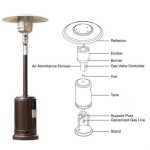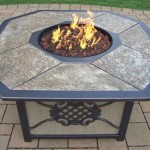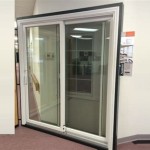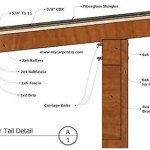Interlocking Polywood Deck Patio Tiles: A Comprehensive Guide
Interlocking polywood deck patio tiles offer a versatile and increasingly popular solution for creating aesthetically pleasing and functional outdoor spaces. These tiles, often manufactured from recycled plastics and wood fibers, provide a durable and low-maintenance alternative to traditional wood decking, concrete patios, or stone walkways. Their interlocking design allows for relatively easy installation, making them a suitable option for both DIY enthusiasts and professional contractors.
The appeal of interlocking polywood deck patio tiles stems from a combination of factors, including their resistance to weathering, ease of cleaning, and the visually appealing aesthetic that mimics the look and feel of natural wood. Furthermore, their modular nature provides design flexibility, enabling the creation of custom layouts and patterns to suit varying outdoor settings and personal preferences.
This article will delve into the various aspects of interlocking polywood deck patio tiles, encompassing their composition, advantages, installation process, maintenance requirements, and factors to consider when selecting the appropriate tiles for a specific project.
Understanding the Composition and Manufacturing
Interlocking polywood deck patio tiles are primarily composed of a mixture of recycled plastic materials and wood fibers. The specific ratio of these components can vary between manufacturers, impacting the tile's overall properties and performance characteristics. Common plastics utilized include high-density polyethylene (HDPE) and polypropylene (PP), known for their durability and resistance to moisture and UV degradation.
The wood fibers contribute to the tile's natural wood-like appearance and texture. These fibers are typically sourced from recycled wood products, such as sawdust and wood chips, promoting sustainable manufacturing practices. The combination of plastic and wood fibers results in a composite material that offers enhanced resistance to rot, decay, and insect infestation compared to traditional wood decking.
The manufacturing process typically involves combining the plastic and wood fibers under high heat and pressure. This process creates a dense and homogenous material that is then molded into the desired tile shape. Interlocking mechanisms, such as tabs or loops, are integrated into the tile design to facilitate secure and seamless connections between adjacent tiles. The tiles often undergo further processing, such as embossing or texturing, to enhance their aesthetic appeal and slip resistance.
Variations in the manufacturing process and the specific materials used can lead to differences in the tile's color, texture, and performance characteristics. Some manufacturers offer tiles with a weathered or distressed finish to replicate the look of aged wood, while others provide options with enhanced UV protection to minimize fading over time.
Key Advantages of Using Interlocking Polywood Deck Patio Tiles
Choosing interlocking polywood deck patio tiles offers several advantages over traditional decking materials. These benefits contribute to their growing popularity among homeowners and contractors alike.
Durability and Weather Resistance: Polywood tiles are inherently resistant to moisture, rot, decay, and insect infestation. This characteristic makes them ideal for outdoor applications, where they are exposed to varying weather conditions. Unlike traditional wood, polywood tiles do not require regular staining or sealing to maintain their structural integrity. The material also resists cracking, splintering, and warping, ensuring a long-lasting and aesthetically pleasing surface.
Low Maintenance Requirements: The low-maintenance nature of polywood tiles is a significant advantage. They require minimal upkeep compared to wood decking, which often necessitates annual staining or sealing. Cleaning polywood tiles is typically as simple as sweeping or hosing them down with water. For more stubborn stains, a mild soap and water solution can be used. The resistance to mildew and algae growth further reduces the need for frequent cleaning.
Ease of Installation: The interlocking design of these tiles simplifies the installation process. No specialized tools or expertise are typically required. The tiles can be easily snapped together to create a continuous surface. This ease of installation makes them a suitable option for DIY projects, potentially saving homeowners on labor costs. The modular nature of the tiles also allows for easy repairs or replacements, as individual tiles can be removed and replaced without affecting the entire surface.
Aesthetic Appeal and Design Flexibility: Polywood tiles are available in a wide range of colors, textures, and patterns, allowing for design flexibility. They can mimic the look and feel of natural wood, providing a visually appealing alternative to concrete or stone. The modular nature of the tiles enables the creation of custom layouts and patterns, allowing homeowners to personalize their outdoor spaces. The tiles can be used to create borders, pathways, or entire deck surfaces.
Environmental Friendliness: Many polywood tiles are manufactured from recycled plastic and wood fibers, contributing to sustainable building practices. By utilizing recycled materials, these tiles help reduce waste and minimize the demand for virgin resources. The long lifespan of polywood tiles further reduces their environmental impact, as they do not need to be replaced as frequently as traditional wood decking.
Considerations for Installation and Maintenance
While interlocking polywood deck patio tiles are relatively easy to install, proper preparation and installation techniques are crucial for ensuring a long-lasting and aesthetically pleasing surface. Similarly, implementing appropriate maintenance practices will help prolong the lifespan and maintain the appearance of the tiles.
Site Preparation: Before installing polywood tiles, the underlying surface must be properly prepared. The surface should be level, stable, and well-drained. Uneven surfaces can lead to uneven tile placement and potential instability. If installing the tiles on grass or soil, a layer of gravel or compacted sand may be necessary to provide a stable base and promote drainage. For concrete or existing patio surfaces, cleaning and leveling any imperfections is essential.
Installation Techniques: The interlocking mechanism of the tiles typically allows for a simple snap-together installation. However, it is important to follow the manufacturer's instructions carefully. Start by laying out the tiles in the desired pattern and ensuring proper alignment. Use a rubber mallet to gently tap the tiles together, ensuring a secure connection. For edges and corners, the tiles may need to be cut to size using a saw. Leave a small expansion gap around the perimeter of the deck to allow for thermal expansion and contraction.
Drainage Considerations: Proper drainage is essential for preventing water accumulation beneath the tiles, which can lead to mold growth or structural damage. Ensure that the underlying surface is sloped slightly to allow water to drain away from the deck. If installing the tiles on a solid surface, consider using a drainage mat or creating drainage channels to facilitate water flow. Regularly inspect the drainage system to ensure that it is clear of debris.
Cleaning and Maintenance: Polywood tiles are relatively easy to clean and maintain. Regularly sweep or hose down the tiles to remove dirt and debris. For more stubborn stains, use a mild soap and water solution. Avoid using harsh chemicals or abrasive cleaners, as they can damage the tile's surface. Inspect the tiles periodically for any signs of damage or wear. Replace any damaged tiles promptly to prevent further deterioration.
Seasonal Considerations: In colder climates, it is important to protect the tiles from damage caused by freezing and thawing. Remove any snow or ice accumulation promptly. Avoid using de-icing salts, as they can corrode the tiles. If necessary, use a plastic shovel to remove snow. Consider storing the tiles indoors during the winter months to prolong their lifespan.
The selection of appropriate interlocking polywood deck patio tiles requires careful consideration of several factors to ensure that the chosen tiles meet the specific needs of the project. Factors such as the tile's composition, thickness, color, texture, and interlocking mechanism should be evaluated. Furthermore, it is important to consider the intended use of the deck or patio, the expected level of foot traffic, and the prevailing weather conditions.

Denislawn Wood Plastic Composite Patio Deck Tiles 12 In X Interlocking Light Grey 11 Pack

Interlocking Wood Deck Tiles For Easy Install Arrak

Yofe 1 Ft X Acacia Wood Interlocking Deck Tiles In Gray Indoor Outdoor Checker Pattern Floor 30 Per Case

Classic Wood Deck Tiles Interlocking Composite Patio Flooring Clearhalo

Tunearary 24 In X 12 Gray Outdoor Patio Interlocking Deck Tile Diy Pieces Pptilezj01

Domi Outdoor Living 2787 27p Patio 12 X12 Composite Interlocking Decking Tile 27 Pieces One Pack Dark Grey

Outsunny 12 X Hdpe Interlocking Composite Deck Tile 10 Pack Grey

Unbranded 1 Ft X Composite Deck Tile Patio Interlocking Tiles For Balcony Porch Backyard In Dark Gray Pack Of 9 D212yww12210

Outsunny 12 X Wood Plastic 11pcs Quick Interlocking Flooring Patio Deck

Btmway Solid Wood Patio Deck Tiles Pack Of 20 12 X12 Square Interlocking Flooring Acacia Composite Decking Floor Indoor Outdoor
Related Posts








